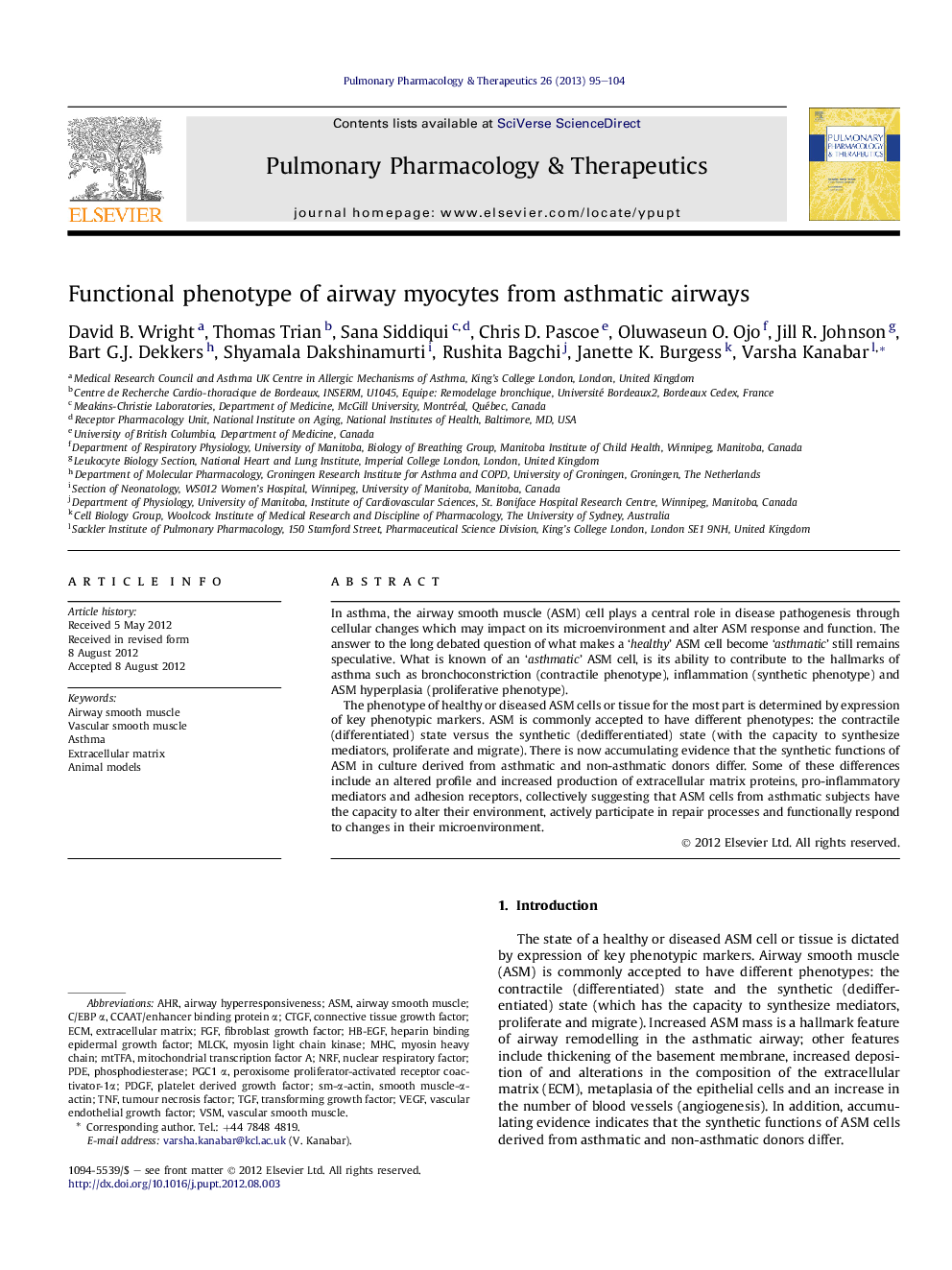| Article ID | Journal | Published Year | Pages | File Type |
|---|---|---|---|---|
| 2567337 | Pulmonary Pharmacology & Therapeutics | 2013 | 10 Pages |
In asthma, the airway smooth muscle (ASM) cell plays a central role in disease pathogenesis through cellular changes which may impact on its microenvironment and alter ASM response and function. The answer to the long debated question of what makes a ‘healthy’ ASM cell become ‘asthmatic’ still remains speculative. What is known of an ‘asthmatic’ ASM cell, is its ability to contribute to the hallmarks of asthma such as bronchoconstriction (contractile phenotype), inflammation (synthetic phenotype) and ASM hyperplasia (proliferative phenotype).The phenotype of healthy or diseased ASM cells or tissue for the most part is determined by expression of key phenotypic markers. ASM is commonly accepted to have different phenotypes: the contractile (differentiated) state versus the synthetic (dedifferentiated) state (with the capacity to synthesize mediators, proliferate and migrate). There is now accumulating evidence that the synthetic functions of ASM in culture derived from asthmatic and non-asthmatic donors differ. Some of these differences include an altered profile and increased production of extracellular matrix proteins, pro-inflammatory mediators and adhesion receptors, collectively suggesting that ASM cells from asthmatic subjects have the capacity to alter their environment, actively participate in repair processes and functionally respond to changes in their microenvironment.
